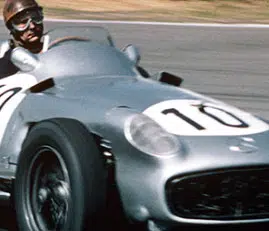There was no shortage of entries, no boycotts by drivers, no reluctance to take part and the chosen Top Twenty, with two spares were all ready to go by mid-week. Practice was arranged for Thursday morning and afternoon; Friday was restricted to Formula Three and Renault racing practice while Saturday morning saw the Formula One teams wasting 1 ½ hours on “testing” without official timing, and for an all-too-short one hour on Saturday afternoon everyone had a final chance to establish their position on the starting grid. The positions were very critical, for in the interests of something or other, the grid at Monte Carlo is lined up in two staggered rows, with all those on the left about two car lengths ahead of those on the right, making an effective 1 x 1 grid formation, so the car on pole position had two-lengths start over the second fastest and so on.
There were a few changes among the establishment since the race in Spain, notably that McLaren and Tyrrell had made strategic withdrawals on the technical front and Shadow had, swapped their young Italian driver for an even younger one, retaining the sponsorship money and the colour scheme of their cars. McLaren wisely decided that Monte Carlo was no place to continue development on their new M26 car, so Hunt was driving his old-faithful M23/8 with his newer M23 as a spare. The Tyrrell team showed further confusion since Spain by back-tracking their 6-wheeler design to Monaco 1976, for the cars used by Peterson and Depailler, in an attempt to find out where they went wrong since the promising showing of the P34 cars last year. The Brabham – Alfa Romeo team had been sorting things out on the Alfa Romeo test track at Ballocco, mid-way between Milan and Turin, though some pro-Cosworth followers suggested unkindly that the “testing” had involved fitting 4-litre engines.
Monte Carlo is one circuit that can only be used for official practice when the management of the Principality permit it, so there had been no pre-practice-practice, or pre-practice-testing. Thursday morning from 10 a.m. to 11.30 a.m. (actually 10 minutes late) was the first contact that they all had with the circuit, apart from those like Peterson and Scheckter who live in the Monte Carlo and occasionally walk the streets. The Brabham team were fired with a very competitive spirit and Watson and Stuck were at the head of the queue waiting to leave the pit lane. With twenty-five cars using the circuit, in and out of the pits, the scene was the unusual confusion that the Formula One crows accept as a qualification period. Fast drivers were held up by slow ones through the wiggly section on the harbour front, or had a clear run into the chicane at Saint Devote completely spoilt by someone leaving the pits. Slow drivers trying to learn were hampered by blue flags and the “chargers” forcing their way by down the hill to the Mirabeau Hairpin, or filling both mirrors through the slow corners. What became obvious very early on was the way some drivers and teams got into a rhythm, in spite of all this confusion, while others were going in fits and starts. Among those who quickly settled into a rhythm were the two Brabham drivers and Reutemann with the second Ferrari. It was very clear that Lauda, Hunt and Andretti just could not get things to flow, seldom doing more than a lap or two without stopping. Peterson worked into a good rhythm with the six-wheeled Tyrrell and Scheckter showed signs with the Wolf (or rather, with the Wolves, as he tried WR1 and WR3). The two Brabham drivers were in a class of their own, very little wrong with their cars and the Alfa Romeo engines working well. While Watson was driving hard and neatly, his team-mate Stuck was on the verge of an accident the whole time, but by reason of superb reflexes he didn’t actually have one. It was no surprise that the morning ended with the two Brabhams in the first two places, with Stuck fractionally faster, but while his hairy progress was fun to watch, it didn’t look as though he could keep it up for a whole race, whereas Watson looked safe and secure and only 0.13 sec. Slower. Stuck was showing “enthusiasm, bravado and lightning reflexes” and by his own admission was well over ten-tenths in effort. Watson, o the other hand, was a fine example of how to e sure to get to the end of the 76-lap race, with every chance of being first.





